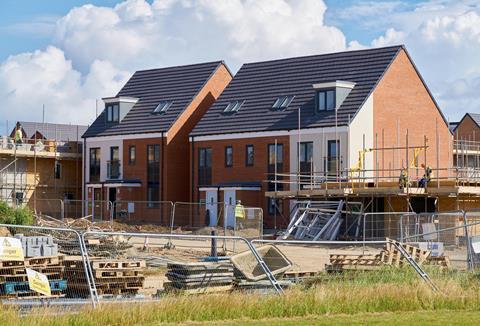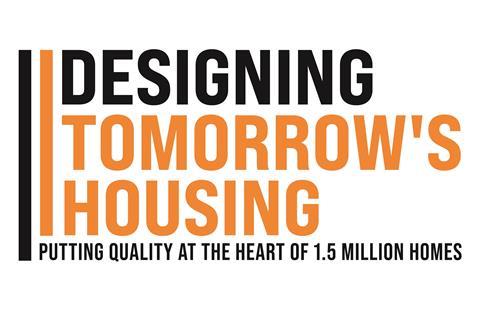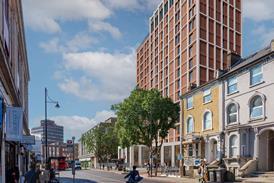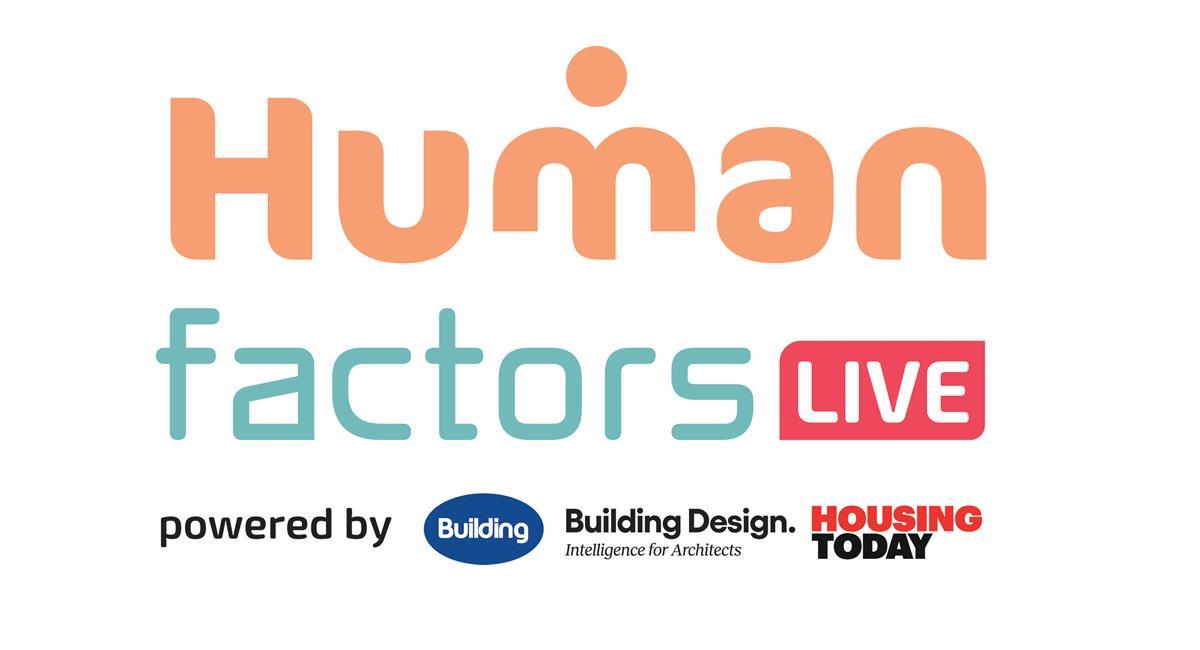As the cost of land, materials and regulation spirals, Mary Richardson examines how Britain’s viability crisis is squeezing design quality and stalling the creation of real places to live

Britain’s housing ambitions are colliding with a stark economic reality: across much of the country, it is becoming harder and harder to make building new homes financially stack up.
The government’s target of 1.5 million new dwellings over the course of this parliament was meant to address decades of undersupply, yet developers are warning that the numbers simply do not add up. Schemes that once looked viable are being paused or abandoned altogether, not for lack of demand, but because the costs of land, construction, finance and regulation increasingly outweigh the value of what can be sold.
In the housebuilding sector, “viability” describes whether a project can generate sufficient return once all those costs are factored in. When the total cost of delivery exceeds the likely market value, the scheme is deemed unviable, and, as growing numbers of developers attest, that is now the rule rather than the exception.
Even at today’s high sale prices, new homes frequently cannot be delivered viably, creating a widening gap between the government’s political aspirations and market reality.

This is not just a technical or accounting problem. Viability has become the fault line running through the housing crisis, shaping what gets built, where, and by whom. It reflects deeper structural imbalances in how risk, cost and regulation are distributed across the system, from national policy to local planning.
The result is a slowdown that threatens not only housing supply but also design quality and the diversity of the development sector itself. The viability crisis reaches across every stage of delivery, adding further pressure to the already squeezed quality and design of the homes that do get built.
For the large volume housebuilders, housebuilding remains profitable in many regions, although the picture has become far more challenging. Even for them, margins have fallen sharply since 2022, hit by weaker demand following the end of Help to Buy, higher interest rates and inflationary supply chain pressures.
The growing burden of affordable housing contributions has also weighed heavily on viability, particularly in areas where land and construction costs are already high. Many firms have reduced output, eroding economies of scale and spreading fixed costs over fewer units.
Still, housebuilding has always been cyclical, and over the long term the big developers have proved adept at riding those cycles and protecting returns. But what we have seen over the past decade is the progressive squeezing out of SME housebuilders and contractors, unable to bear the rising costs and regulatory uncertainty, consolidating the market into the hands of the so-called big six.
For now, however, the slowdown exposes a more structural issue, one that threatens the viability of smaller players and the diversity of the sector as a whole.
Capital critical
If housebuilding is becoming tougher across the country, in London it has reached a near standstill. The slowdown is most severe in the very place where demand is greatest, with new housing starts collapsing to historic lows.

Nicholas Boys Smith, founder of Create Streets, describes the situation bluntly: “For years, London housing supply has been trapped in a ‘pile it high in a few places’ model. Growth is banned almost everywhere while complex high-rises are squeezed onto a handful of brownfield sites.
“The green belt has blocked outward growth and England’s uniquely high-risk planning system has prevented existing London streets from intensifying as they used to do. (Remember, most of the City of London was once just a few storeys high). That model has now failed. Supply is cratering.”
He argues that the regulatory environment has now turned toxic. “Ministers may keep saying ‘Build, Baby, build!’ but, I fear, the detailed rules whisper ‘Maybe not’. We’ve poured a toxic cocktail onto London’s new-build homes: a mis-managed new Building Safety Regulator, twin staircases, compulsory dual-aspect homes and a leasehold ban without a working replacement.”
While not all of these measures originated with the current government, he says, “cumulatively, they have been disastrous. Private housing starts are down to around 5% of what’s needed.”
Cumulative costs count
As Boys Smith implies, regulatory reform becomes a viability issue when compliance costs and delays erode margins to the point where schemes no longer make financial sense. For smaller developers, that threshold can be fatal.
Few firms can withstand nine-month delays and rejection rates above 70% at the Building Safety Regulator, or the prolonged uncertainty created by overstretched planning departments.
These cumulative pressures have driven a steady contraction of the SME sector. The Federation of Master Builders notes that in the 1980s, smaller firms delivered around 40% of new homes; today, the figure is closer to 10%.
Rationalisation has occurred in many industries, but in construction, the combination of planning risk, compliance costs and regulatory churn creates particularly high barriers to entry. The result is a system where only the largest and best-capitalised developers can endure - at the expense of diversity, competition and, ultimately, housing supply.
Squeeze on SMEs

Nick Cuff, managing director of development consultancy Urban Sketch, articulates the pressures facing small and medium-sized developers. “The system was always precarious, a delicate balance of pragmatic trade-offs by local authorities and developers accepting risk of discretionary decisions because the returns were there.
“Sometimes they did well, sometimes they did not, but there was always an opportunity to recover returns during the elongated development process. Those returns have been whittled away over the last five years.”
On the demand side, he points to stamp duty, mortgage rates, tax changes on overseas investors and buy-to-lets, the loss of Help to Buy, and higher risk-free rates affecting build-to-rent yields. On the supply side, he lists the growing stack of charges that now make small-scale development increasingly unworkable: “two forms of Community Infrastructure Levy (CIL), section 106 contributions, carbon offset levies, biodiversity net gain and now the soon-to-be-adopted Building Safety Levy”.
“It doesn’t end there,” he adds. “A landfill tax hike is also being mooted to firmly nail the coffin of brownfield housing development. Then you have new regulatory requirements around fire safety. Buildings have lost around 3 to 5% of net saleable floor area from the addition of secondary cores and evacuation lifts.
“Less revenue, more cost and, on an appraisal, the impact is around 20% on land value (or, if you had already bought your site before the changes, your entire profit). And that’s before you even talk about late-stage reviews. It’s time the industry spoke out about these as they are acting as a blockade to fresh investment entering London residential development.”
Cuff concludes that London’s housing emergency has now become “a full-blown brownfield development crisis”. The sharp fall in housing starts, from more than 60,000 when the current mayor took office to fewer than 10,000 this year, is, he argues, “a part consequence of poorly conceived policy interventions.
These have exacerbated an already challenging macroeconomic trading environment and wiped out brownfield viability. You cannot easily correct macroeconomic trading conditions, but you can make right policies that are not working.”
Affordable housing

Steve Turner, executive director at the Home Builders Federation, highlights another factor constraining housing delivery nationwide. Many housing associations are now in financial difficulty, focusing on maintaining existing stock rather than taking on new units.
As a result, hundreds of schemes are stalled because no registered provider is willing or able to take on the affordable housing element required through planning obligations.
“The rigidity of affordable housing policy is holding back delivery,” Turner explains. “With fewer registered providers bidding for units, thousands of affordable homes remain uncontracted.
“This in turn stalls the wider market as developers cannot meet planning obligations for sites. An estimated 100,000 private homes are currently delayed as a result.”
Turner argues that “immediate action is needed to ease these constraints on delivering affordable housing through section 106 agreements”. The government, he says, should encourage local authorities to engage constructively with renegotiations when a provider cannot be secured.
“This will help to ensure homes can continue to be built and provide reassurance that if a registered provider cannot be found, affordable homes can be changed to an alternative tenure or, as a last resort, a payment made to the local planning authority in lieu of the affordable housing. Without such measures, the gap between housing supply and government targets will only widen.”
The government appears to have been listening: in London, ministers and the mayor have announced plans to cut the capital’s affordable housing requirement from 35% to 20% in a bid to revive stalled development and bring forward new sites.
Turner adds that rising regulatory costs and levies continue to erode viability across the board. “Environmental measures and further increases to energy efficiency are all on their own extremely worthwhile but, combined with the broader range of requirements, make many sites undeliverable, while the incoming building safety levy and the proposed huge increases – 3,000% – in landfill tax will add thousands of pounds to every new home delivered.”
No new homes
The numbers illustrate the depth of the problem. There were just 35,640 new housing starts in the first quarter of this year and 38,780 completions, while planning approvals fell to a record low in the second quarter, with only 7,000 applications granted nationwide – the lowest since records began in 1979.
To meet the government’s target of 1.5 million homes, around 300,000 new units would need to be built each year. In reality, the country would require more than 3 million simply to reach average EU housing stock levels.
With supply so constrained, prices continue to rise, pushing ownership further out of reach. In 2024, the average home in England cost 7.7 times average earnings, and in London the ratio was 11 to one.
The viability crisis has thus become a vicious circle: schemes stall because they cannot be built affordably, and affordability worsens because so little is built.
Impact on design
What impact does this imperfect storm have on design? At one level, it is a moot question: if nothing gets built, design becomes irrelevant. Yet there has long been unease within the profession about the quality of homes produced by the major housebuilders.
Critics point to the effects of value engineering, material substitution and risk-averse design choices, as firms seek to protect margins under mounting financial pressure.
Ufuk Bahar, founder of Urbanist Architecture, says these pressures are eroding quality across the sector. He describes a growing reliance on cheaper, lower-grade materials as a “false economy” that undermines durability and drives up long-term maintenance costs.
Homes built this way, he argues, are “like ticking time bombs for homeowners,” contributing to a culture of short lifespans, demolition and rebuilding at odds with sustainability goals. The tragedy of Grenfell, he adds, showed how serious the consequences of substandard materials can be.

Bahar also highlights the industry’s slow adoption of modern construction methods. Traditional bricks-and-mortar building remains “labour-intensive, time-consuming and wasteful,” while technologies such as modular construction, 3D printing and BIM could transform quality and efficiency if embraced more widely.
Questions of style and character are more complex. Developers are rational actors, building homes in the forms they know the market will buy. If those designs appear conservative, that reflects consumer preference as much as corporate intent.
Yet the narrowing of the development base has undoubtedly reduced experimentation. The innovation and variety once provided by a wider pool of SME builders is now largely absent, and with it the chance to deliver greater design diversity.
New Homes Ombudsman
In response to longstanding concerns about quality, the independent, voluntary New Homes Quality Board was established in 2021, complete with an ombudsman and code of practice; and this now covers more than half of all new homes sold. The government is going further with a commitment to put in place a statutory new homes ombudsman and code of practice.
Steve Turner points to strong customer satisfaction data as evidence of progress. “Despite all the challenges, developers remain committed to delivering high-quality, sustainable homes,” he says.
“Progress made in recent years evidences this with 94% of buyers recommending their builder to a friend or family member – representing a fifth successive year of satisfaction levels above 90%. Innovation is also driving advances in energy efficiency, biodiversity, and carbon reduction, which in turn is saving households hundreds of pounds annually.”
Wrong products

Yolande Barnes, emeritus professor of real estate and former head of research at the Bartlett, argues that the market has drifted away from what people actually want. “In this context, design isn’t so much about the quality of a luxury flat, it’s more about what gets built,” she says.
“Family homes – good street properties that are comfortable, don’t cost the earth in terms of energy, and are well connected in terms of social and environmental amenities – that is where the demand is, but that isn’t what has been built.”
She believes the solution lies partly in rethinking how we use what we already have. “What we should also be doing is making the most of existing suburbs.
“Typical 1930s suburbs could have additional homes built in them without being destroyed, through infill, mews developments, neighbourhood commercial uses and using plots more imaginatively – intensification rather than densification.” Realising this vision, she acknowledges, would require significant changes to planning rules.
Barnes also draws attention to the urgent need to upgrade Britain’s ageing housing stock. “There are about 11 million homes with EPCs of D or below that need upgrading. That is the opportunity to grow GDP.”
Yet her argument goes further than retrofit. “For me, that’s where the future of the industry lies. I don’t think the future should be in building new towns and cities because, frankly, land and infrastructure costs and financing make them unviable.
“We haven’t developed the skills and economic models to overcome this yet. So when we build new places, we often don’t build all the fine grain stuff that’s needed to create good neighbourhoods.”
Her prescription is simple but radical: “We have to both change developer business models significantly and refocus on regenerative urbanism.” In other words, a shift from speculative new build towards reimagining and reinvesting in the urban fabric that already exists.
Operational perspective

Alison Coutinho, operations director at Mace and a member of the advisory panel for Building Design’s Designing Tomorrow’s Housing campaign, offers a more operational take on the problem. She argues that viability is too often treated as an afterthought.
“Too often, viability is treated as a discrete workstream in building or housing design, addressed only once designs are well progressed, or even post-consultation with stakeholders and the community. Given the prevalence of viability gaps in today’s developments, this leads to costly, disheartening redesigns that dilute ambition and increase the time required to deliver new sites.”
Instead, Coutinho says, it should be part of the design process from the outset. “We need a fundamental shift in how this is approached. Viability must be embedded from the outset, treated less like a constraint but instead as a creative framework to shape contextually rich, deliverable design from day one.”
The economist’s view

Ultimately, the viability crisis reveals a deeper contradiction: a system designed to create good places to live now makes it increasingly difficult to build them at all.
Christian Hilber, professor of economic geography at the LSE, has spent years analysing the economics of UK housing. “The UK has consistently failed to build enough homes to keep housing affordable,” he says.
“From 1970 to 2022, real house prices rose by 441%, while annual construction fell sharply from 378,320 to just 205,340 units. The system is broken.”
Why is housing supply so unresponsive to demand? Hilber identifies “regulatory supply constraints” as the root cause. “The UK’s ‘development control’ planning system is both rigid and unpredictable, creating uncertainty and risk for developers – thereby constraining development,” he explains.
“Developers often face resistance from NIMBY local communities, a challenge amplified by the discretionary nature of the current system. Additionally, large parts of our inner cities remain effectively frozen thanks to conservation areas and listed building protections, which limits opportunities for higher-density, more energy-efficient redevelopment.”
Hilber illustrates the impact starkly: “If the South-east – England’s most restrictive planning region – had applied planning standards as lenient as those in the Northeast, the least restrictive region (though still tight by international standards), house prices in 2008 would have been around 25% lower.”
No incentives
Hilber argues that the problem is not only regulatory but structural. “In England, planning decisions rest with local authorities, who bear most of the costs of providing the infrastructure and services needed for new housing,” he says.
“While new homes generate some additional council tax revenue, this is largely redistributed through the central government grant system. At the same time, local officials are elected by NIMBY residents who oppose new developments, fearing shrunken school catchment areas, increased traffic, overstretched GPs, and obstructed views.”
The result, he adds, is a system with “virtually no fiscal or political incentive to approve new housing”. Local costs are immediate and visible, while the benefits of new homes are dispersed and often politically unpopular.
“Unless this imbalance is addressed,” Hilber concludes, “meaningful progress is unlikely.”
Zone-based system
Hilber is clear that current proposals for planning reform will not go far enough. “Tackling the crisis will require radical reform,” he says. “Policymakers must reform the planning system away from today’s extraordinarily restrictive and idiosyncratic development-control system towards a clear, rule-based zoning system.
“The system should be redesigned to reduce the influence of NIMBYs and refocus on its primary purpose: correcting market failures. In addition, both horizontal and vertical planning restrictions should be tested against rigorous social cost–social benefit analysis – and, where costs outweigh benefits, the constraints should be removed.”
He argues that this must be accompanied by fiscal reform. “The government should also scrap the idiosyncratic and arbitrary section 106 agreements in favour of a more systematic rules-based developer levy, and phase out stamp duty land tax, replacing it in a revenue-neutral way with a reformed council tax, which should be a genuine local annual levy on property values, with revenues retained by local authorities. If councils could benefit directly from new housing, they would have a clear incentive to support development.”
Nicholas Boys Smith also has ideas for a more enabling system. “New policies are needed on fire safety, dual aspect and twin staircases as well as better management at the Building Safety Regulator,” he says.
Echoing Yolande Barnes, he adds: “Better still, they should stop relying on one broken model and unlock the homes hiding in our existing streets. The Localism Act and the Levelling Up and Regeneration Act already give them the tools: Local Development Orders, Street Votes, and authority-wide codes. They’re gathering dust.
“I had plans at the Office for Place to help councils pre-approve hundreds of thousands of new homes. This would also have helped SME housebuilders and the self-build sector. If I were in Steve Reed’s shoes, I’d dust those policies off and de-risk hundreds of thousands of new homes tomorrow.”
Radical reform
Hilber argues that solving the viability problem will require nothing short of radical change. A more flexible system would release more land for development, increase competition between firms of all sizes, and foster innovation and diversity across the sector.
But he also warns that reform will require a cultural shift among homeowners. Property, he says, must be seen less as a store of wealth and more as a place to live.
“Homeowners can only realise their housing wealth by selling and moving somewhere far less desirable, or even abroad,” he notes. “What truly drives wellbeing is the quality, size, and location of our homes – not their market value.
“Yet many people are stuck in cramped, substandard housing far from their workplaces, precisely because supply is so limited and prices so high. Many current homeowners are older, with children struggling to find suitable housing of their own. What they may not see is that opposing reform ultimately undermines their own children’s prospects.”
In the end, radical planning reform and letting go of our attachment to ever-rising house prices are both politically and personally difficult. The government appears aware of the depth of the problem, with ministers signalling a more pragmatic approach to housing delivery and planning reform.
Yet awareness and action are not the same thing. The real test will be whether it can pull all the necessary levers simultaneously, aligning fiscal policy, regulation and local incentives to restore viability while maintaining quality and design ambition. The challenge is not just to build more homes, but to ensure the places created are genuinely worth living in.
>> Also read: Britain’s lost builders: making housing viable again for SMEs
>> Also read: Why building a culture of viability is key to safeguarding quality in major housing programmes
















1 Readers' comment